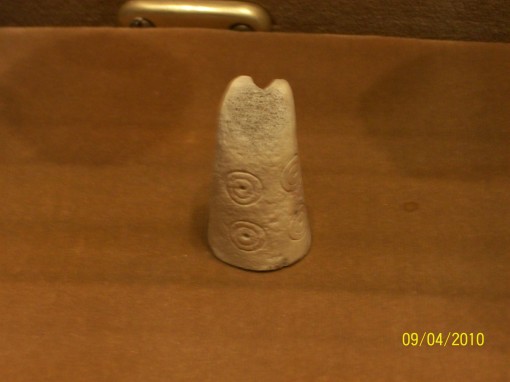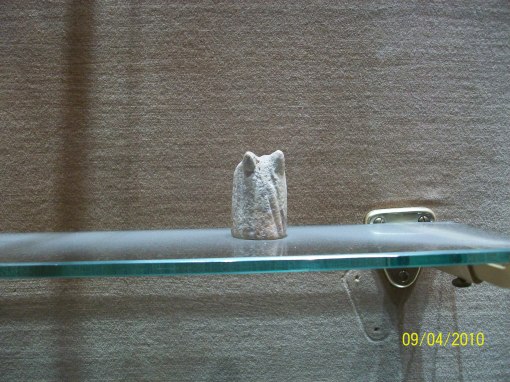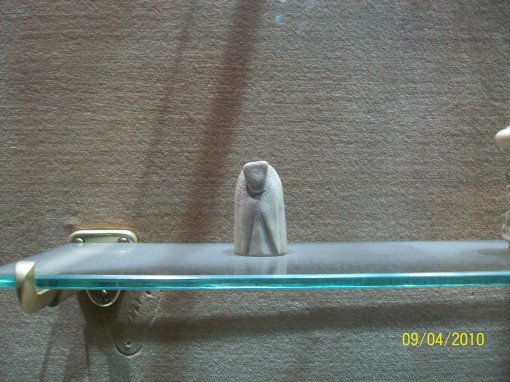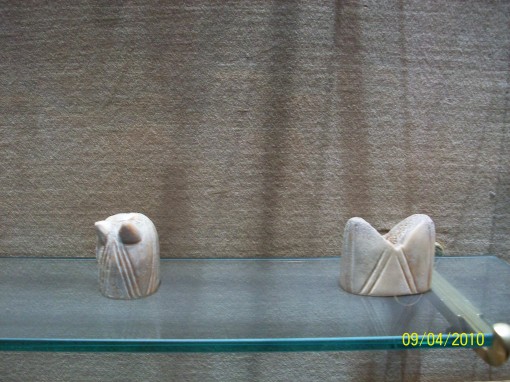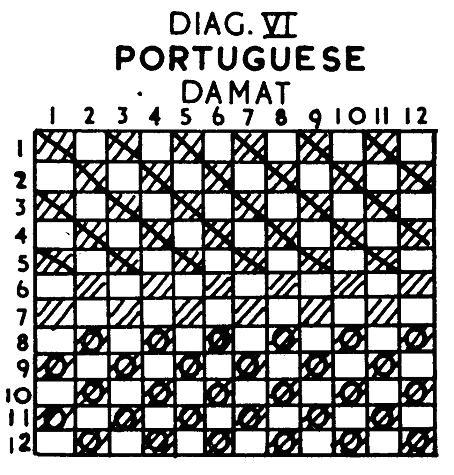Every article in Board Games Studies 4 (2001) concerned the group of games known in Danish as daldøs, in Norwegian as daldøsa, and in Sámi (Lapp) as sáhkku. Although several researchers had been interested in these games separately for some years, BGS/4 was the first time they had been brought together and compared.
The games are a type known as ‘running fight’ games, where players move their pieces around a prescribed circuit of three or four rows on the throws of a dice, with the object of landing on one of the opponent’s pieces, and thus removing it from the board. The winner is the player who removes all of his opponent’s pieces. The rules are fully explained in BGS/4 and, in summary, in Wikipedia. The game is known only in Scandinavia and in North Africa, with one possible exception – a diagram in a 13th century English manuscript.
The boards vary somewhat in size: in Denmark the three rows contain 16+17+16 points; in Norway 12+13+12 are used; while in the Sámi game the rows are all of equal length (generally 15 points). In the North African tâb and sîg games there are either three of four rows of points, with the numbers of points per row varying greatly – from 7 up to 25 or more.
The ‘northern’ board – Norwegian model (daldøsa) – appears like this:

Issue 4 of Board Games Studies is an important source of information on the games of this family. Thierry Depaulis who had been studying tâb and sîg games from the Arab-Muslim world contributed an article on Jeux de parcours du monde arabo-musulman (Afrique du Nord et Proche-Orient) to BGS/4.
Peter Michaelsen, who had been studying daldøs for many years, contributed a translated version of his first conclusions which had earlier been published in the Danish journal Ord & Sag (Michaelsen 1999) under the title Daldøs og Sakku – to gamle nordiske spil (Daldøs and Sakku – two old nordic games). Alf Næsheim contributed an article on the (southern) Norwegian game daldøsa, and Alan Borvo contributed an account of the Sámi (Lapp) game sáhkku.
Thierry Depaulis rounded off the set of articles with a speculation on whether there was any connection between the northern games and those of the Arab-Muslim world. He explored several possible transmission routes:
1. Through the Varangians – or ‘eastern’ Vikings – who travelled through Russia as far as Byzantium. Depaulis concludes, however, that although the ‘Varangian’ hypothesis is attractive, it is difficult to prove.
2. Through contacts between ‘western’ Vikings and the Arab world; though again Depaulis finds this unlikely. Contacts were largely through warfare (including the Crusades) or raiding (in both directions), and Depaulis finds the lack of any record of the games in other countries with greater contacts – France, Germany, England – as indicating that this route is unlikely.
3. Through the Vandals – but Depaulis notes that this northern people, although they came into close contact with North African peoples, did not actually return to Scandinavia, and thus is unlikely to have provided a transmission route.
In his conclusion Depaulis come down in favour of the Varangian, or ‘eastern Viking’ route. He emphasises that “… one thing is striking: we have no trace whatsoever of any tâb-type game in Europe” – though he refers in a footnote to the apparent depiction of a similar board in the 13th century English manuscript MS 0.2.45 from Cerne Abbey, Dorset, kept in Trinity College Library, Cambridge (shown on p.27 of BGS/4). This depiction, though, is unlabelled and the game un-described, so no conclusions can be drawn. It is treated as a strange anomaly that does not seriously call his ‘eastern’ route into question.
However, the 13th century manuscript may not be the only evidence of a daldøs-type game in Western Europe.
The 16th century English warship, the Mary Rose, sank in 1545 in waters just south of England. Her wreck remained undiscovered until 1971, and in 1982 it was salvaged. Of enormous importance to archaeologists was the fact that much of the ship and its contents survived in relatively good condition.
One of the artefacts recovered is the top of an Oak barrel, (item no 81A1995) upon which is carved a clear Morris board, and also another diagram that attracts little attention, but in the light of the recent research on the daldøs/tâb group could be very significant:

The diagram, though difficult to see clearly, has a Morris board at the top, but in the centre is a diagram that is similar to a daldøs(a) board, albeit one with 13+14+13 points:

No other known game or religious or other symbol has the same shape. Although no other evidence exists to reinforce the possibility that the diagram was used as a board for a running-fight game, its discovery beside a known game design (the Morris board) suggests that its purpose may have been similar.
If the board was used for a running-fight game of the daldøs(a) type, it could partly bridge the gap between the games of North Africa and those of Scandinavia. The games of Scandinavia were all found in coastal regions, and in the case of daldøsa the boards are carved in the shape of a ship. These two facts may suggest a nautical origin for the game. If it was played in the 16th century by English sailors, then this could explain its spread eastward. But where might the game have come from?
The crew of the Mary Rose were mainly of English origin, but there were also a few individuals from continental Europe, and analysis of oxygen isotopes in teeth indicates that some were also of southern European ancestry. It is not impossible that some of these crew members brought with them the game that is now known in North Africa, played it on the Mary Rose (and other ships?) and passed it, through nautical contacts, to sailors from Scandinavia.
The problematic 13th century diagram in the Trinity College, Cambridge, manuscript remains, as before, an anomaly in this hypothesis, as it would imply a knowledge of a running-fight game in England several centuries earlier. However the origin of this manuscript is unknown, and it may have come from elsewhere – perhaps even from a country where the game was known. Until more research is done on the manuscript it must remain a mystery.

